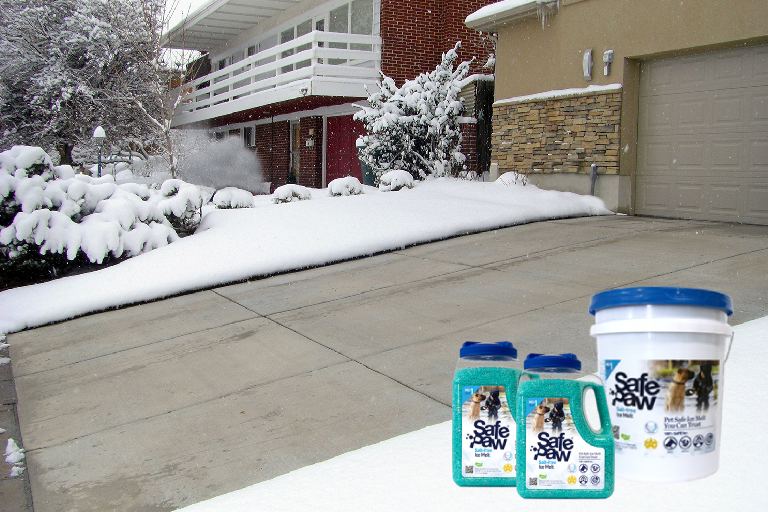
Snow Salt: How It Works And Its Impact On Our Environment
As winter arrives, the familiar sight of snow-covered landscapes beckons us to find effective solutions for snow and ice removal. Snow salt, also known as ice melt or rock salt, is a popular choice due to its ability to melt snow and ice rapidly. However, it is essential to understand how snow salt works and its impact on our environment. In this article, we will explore the mechanics of snow salt and delve into its environmental implications. By gaining insights into the effectiveness of snow salt and its potential consequences, we can make informed decisions about its usage while considering the ecological well-being of our surroundings. Join us as we uncover the intricacies of snow salt and its role in maintaining safe winter environments with a responsible approach towards our environment.
Understanding Snow Salt And Its Function
The Role of Snow Salt in Ice and Snow Management
Snow salt, also known as rock salt or road salt, is widely used to melt ice and snow by lowering the freezing point of water. It helps to create safer walking and driving conditions during winter storms.
Common Types Of Snow Salt
There are various types of snow salt available, including sodium chloride, calcium chloride, and magnesium chloride. Each type has its own characteristics and effectiveness in melting ice.
Pet Safe Ice Melt
The Environmental Impact Of Snow Salt
Negative Effects On Vegetation And Soil
Excessive use of snow salt can lead to damage to vegetation and soil. Salt accumulation can inhibit plant growth, cause soil degradation, and disrupt the balance of ecosystems.
Contamination Of Water Sources
Runoff from melting snow salt can infiltrate water sources, increasing chloride levels and harming aquatic life. This contamination poses risks to both the environment and human health.
Alternatives To Snow Salt
Eco-Friendly Ice Melts
Consider using eco-friendly ice melts as an alternative to traditional snow salt. These products are formulated to be less harmful to vegetation, soil, and water sources while still providing effective ice melting. Safe Paw is a trusted ice melt product. It is non-toxic, pet-friendly, and roof-friendly, making it an ideal choice for protecting your home and environment. Safe Paw's unique formula ensures fast and efficient ice melting without causing harm to the surrounding environment.
Mechanical Snow Removal Methods
Explore mechanical methods for snow removal, such as shoveling, plowing, or using snow blowers. These methods can help reduce the reliance on snow salt and minimize its environmental impact.
Responsible Use Of Snow Salt
Proper Application Techniques
When using snow salt, apply it sparingly and evenly on surfaces to achieve the desired ice-melting effect. Avoid excessive use, as it can lead to unnecessary environmental damage.
Minimizing Salt Usage And Runoff
Take steps to minimize salt usage by properly clearing snow and ice before applying salt. Additionally, create barriers to prevent salt runoff into water sources and sensitive areas.
Conclusion
Snow salt plays a significant role in managing icy conditions, but its environmental impact cannot be ignored. By understanding the disadvantages of salt and exploring alternative solutions, we can make more informed choices for effective and environmentally conscious ice and snow management. Let's strive for safer winters without compromising the health of our environment.
Frequently Asked Questions (FAQs)
- Is Snow Salt Harmful To Plants And Soil? Excessive use of snow salt can cause damage to plants and degrade soil quality. Salt accumulation inhibits plant growth and disrupts the balance of ecosystems.
- How Does Snow Salt Impact Water Sources? Runoff from melting snow salt can contaminate water sources, increasing chloride levels and harming aquatic life. This contamination poses risks to the environment and human health.
- What Are Eco-Friendly Ice Melts? Eco-friendly ice melts are alternative products formulated to be less harmful to vegetation, soil, and water sources. They provide effective ice melting while minimizing environmental impact.
- Are There Alternatives To Using Snow Salt? Yes, mechanical snow removal methods such as shoveling, plowing, or using snow blowers can be effective alternatives to reduce the reliance on snow salt and its environmental impact.
- How Can I Minimize The Environmental Impact Of Snow Salt Usage? Minimize salt usage by properly clearing snow and ice before applying salt. Create barriers to prevent salt runoff into water sources and sensitive areas. Use snow salt sparingly and apply it evenly to achieve the desired effect while minimizing environmental damage.
#EnvironmentallySafeIceMelt #GaiaEnterprises #GaiaEnterprisesInc #GaiaIceMelt #GaiaUSA #GaiaUsa #SnowSalt
https://safepaw.com/?p=8731
Comments
Post a Comment